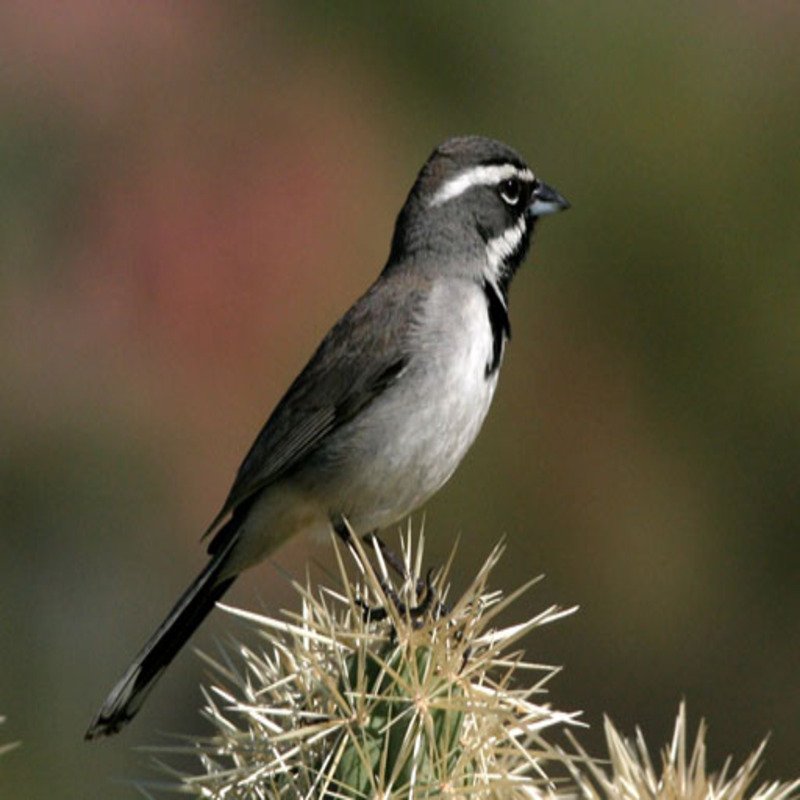It is a small New World sparrow commonly called a Black-throated sparrow with the Latin name Amphispiza bilineata, that can be found in the southwestern United States and northern Mexico. In fact, it is the only member of the genus Amphispiza, in the family of Passerellidae; the five-striped sparrow, which was previously considered to be a member of the genus Amphispiza, is now believed to be a member of the monotypic genus Amphispizopsis.
Quick Overview: Amphispiza Bilineata – Black-Throated Sparrow Body size: Around 5.5 in (14 cm) and a weight of 14 g (0.5 oz)
Main colors: Black, Gray, White
Range: Southern United States
Migratory Bird: Yes
Best time of the year to see in the U.S.: All Year (January – December)
Conservation Status: Least Concern
Black-throated sparrow Description
Amphispiza bilineata are distinguished by their dark, conical bills, as well as their black coat, throat, and mask. There is also a white supercilium and a malar streak visible on the specimen. Gray coloration on the crown, back, and wings; white coloration on the bellies. The round tail is long and black, with a few white patches on the outer feathers of the upper and lower feathers.

Size
These birds have a length of 5.5 in (14 cm) and a weight of 14 g (0.5 oz). Their wings could range 8.5 in (22 cm).
Feeding
Black-throated sparrows eat seeds in the winter and insects in the breeding season. They eat a lot of bugs, but also grasses and herbs. To help digestion, some people take gravel. This bird is usually seen scavenging for insects on the ground.
Habitat
The black-throated sparrow prefers a desolate, sparse landscape. Habitats include creosote bushes and scrub in hot, dry desert uplands. These sparrows prefer steeply sloping or flat terrain. They prefer alluvial fans and hill slopes with exposed rock and gravel pavement.
Behavior
Black-throated sparrows migrate. During the winter, they remain in the southern breeding range. In the winter, they are often seen with white-crowned and Brewer’s sparrows. During some seasons, this species lacks access to water. It gets water from insects and seeds it eats. This adaptation, along with its high heat tolerance, makes it the ideal desert sparrow. Except in the summer when they mate, they are flocking birds.
Amphispiza bilineata Scientific Classification
- Kingdom: Animalia
- Phylum: Chordata
- Subphylum: Chelicerata
- Class: Aves
- Order: Passeriformes
- Family: Passerellidae
- Genus: Amphispiza
- Species: Amphispiza bilineata
Best time of the year to see
In the United States, the best time of year to see these birds is all year round, regardless of the season. This refers to any month of the year between January and December.
Distribution of the Black-throated sparrow in the USA
The breeding range includes eastern Washington, Arizona, Texas, northern and central Mexico. During the winter, northern populations may migrate to the deserts of southern America. The Desert Sparrow breeds and nests in arid and dry desert hillsides and shrubs.
The Black-throated sparrow can be found in the following states in the United States – Alaska, California, Colorado, Hawaii, Idaho, Montana, Nevada, New Mexico, Oregon, Utah, and Wyoming.

